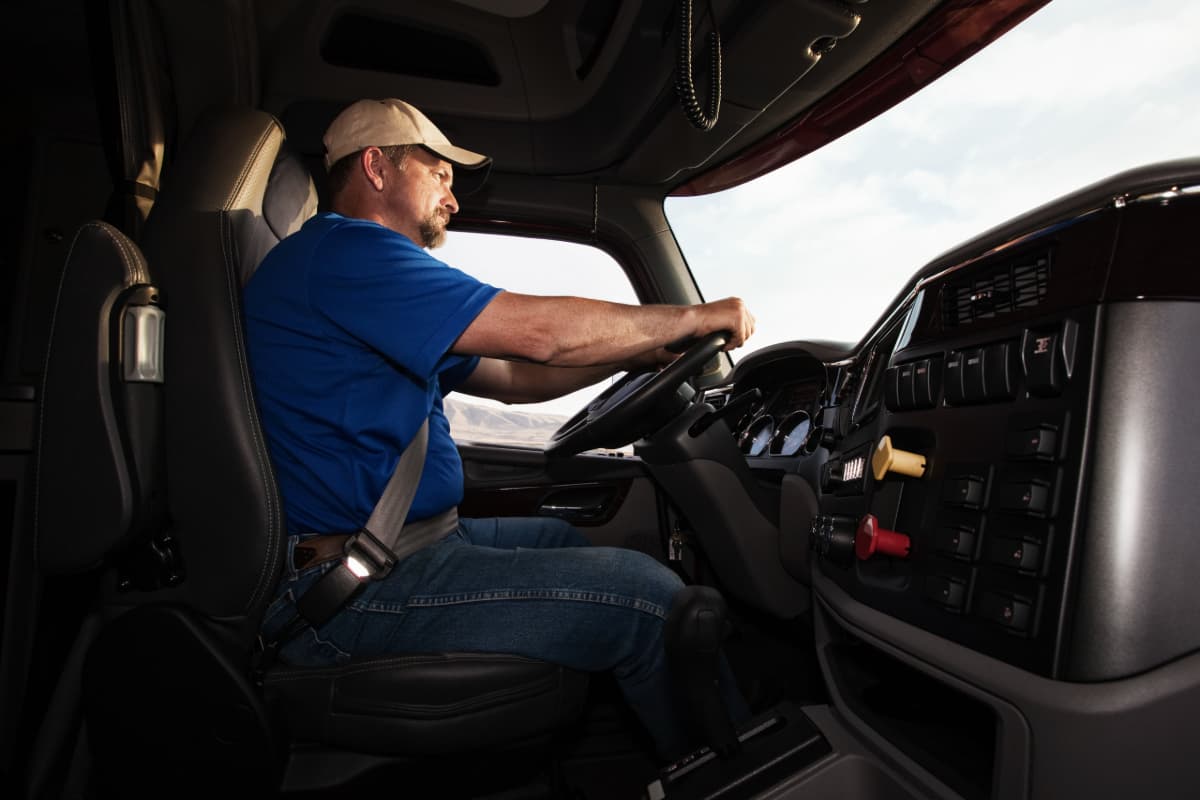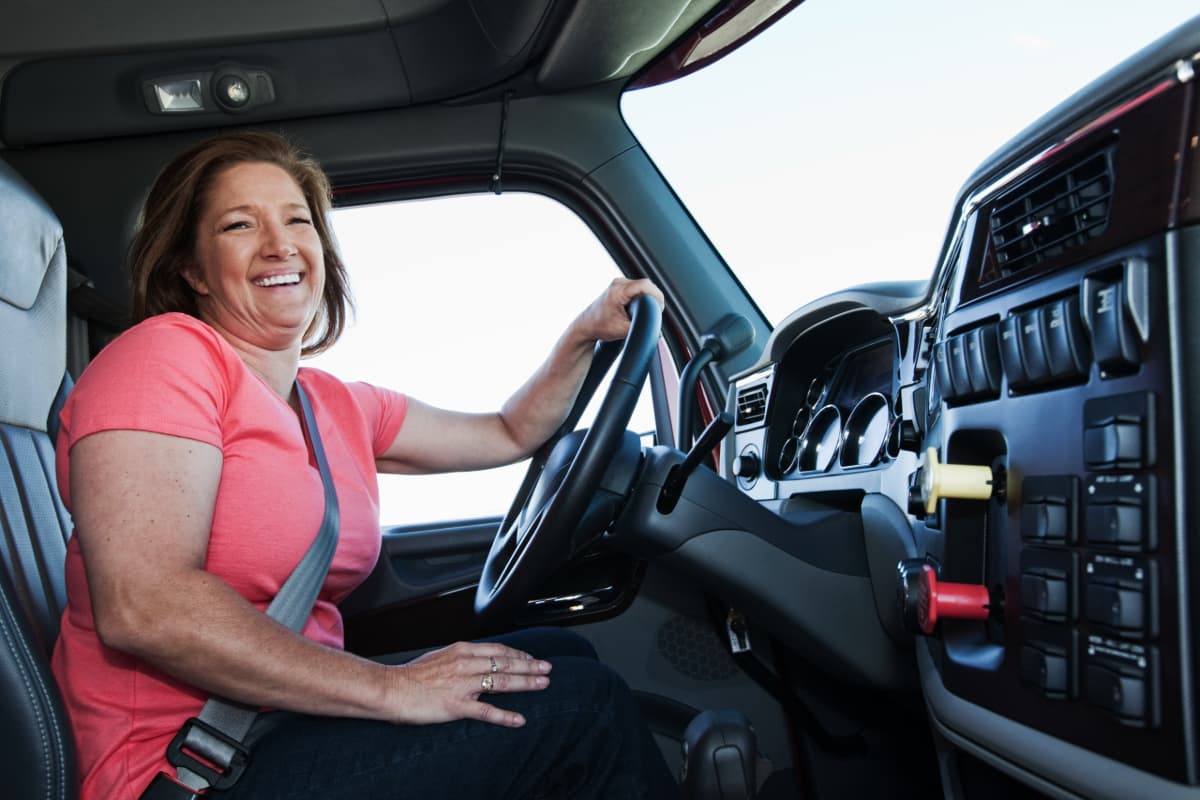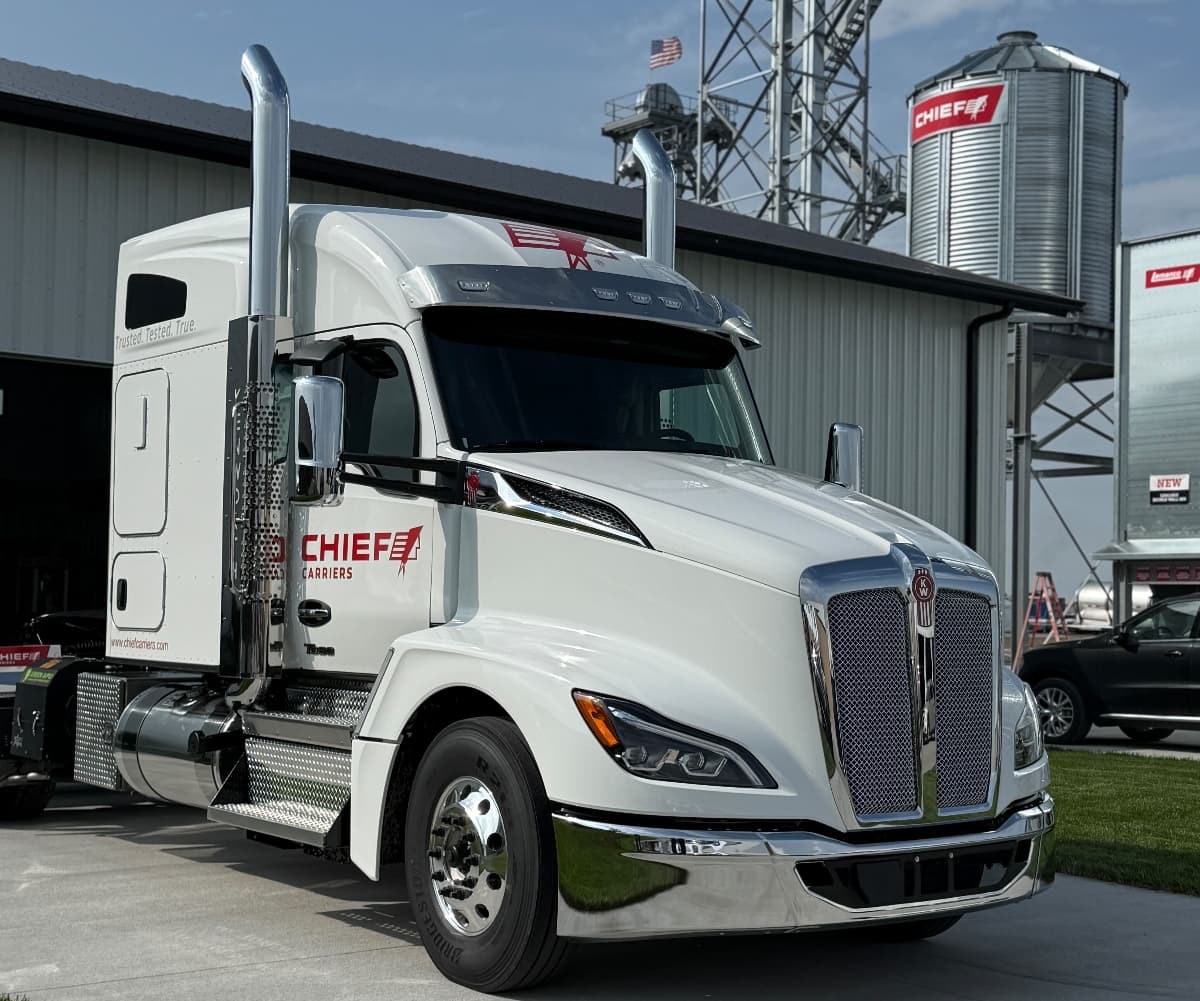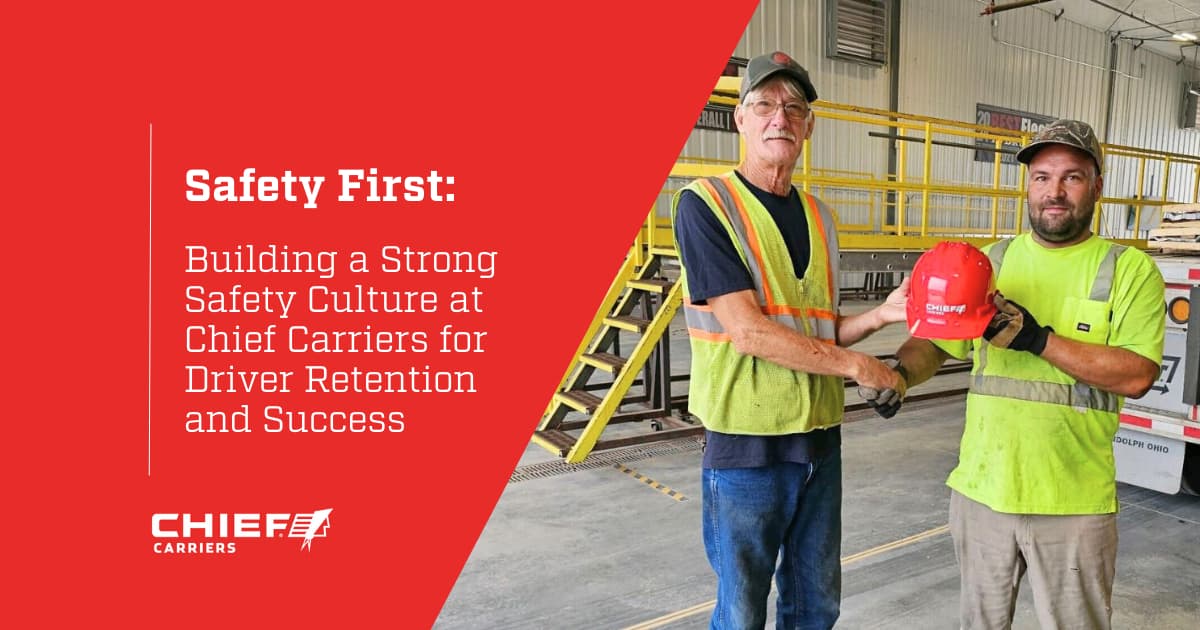Creating a Proactive Safety Culture Mindset to Ensure Every Driver Comes Home Safely
In the trucking industry, a split-second decision can be the difference between a smooth delivery and a catastrophic accident. With thousands of miles and countless hours spent on the road, commercial driver safety isn’t just a buzzword; it’s a non-negotiable priority. For many carriers, safety is merely a set of rules to be followed, but at Chief Carriers, we believe it’s something more profound: a safety culture.
Our culture of safety is the foundation upon which Chief Carriers operates in Nebraska and beyond. We’ll share how our commitment to building a strong safety mindset enhances truck driver safety, improves driver retention, and ultimately, leads to greater success for the company and its team members.

Safety culture goes beyond just following rules; it’s a shared commitment to workplace safety that permeates an entire organization, from leadership to individual employees. This collective value system ensures that employee safety and well-being are a priority in every decision and action.
The Foundation of a Strong Safety Culture: Commitment from the Top Down
A genuine safety culture starts with unwavering leadership support, demonstrated through actions rather than just words. At Chief Carriers, our leadership team sets the tone by making workplace safety a personal value, not just a corporate policy.
This commitment to prioritizing safety above all else exists at every level of the organization, ensuring it is a core part of our operations. Our General Manager, Andrew Winkler, puts it this way: “When safety is a core value, it never changes. We never compromise safety.”
Leadership and Accountability
Chief Carriers’ leadership demonstrates its commitment to workplace safety through an “open-door” policy. This isn’t just a metaphorical invitation; it’s a practice that fosters trust and open communication.
Drivers are encouraged to voice concerns, offer suggestions, and provide feedback without fear of retribution. This dialogue is crucial because the people on the front lines—our drivers—often have the most valuable insights into potential risks and how to mitigate them.
By actively listening and responding, leadership shows that driver input is valued and that safety is a collaborative effort.
The driver has the right to decide whether they proceed or not. There will be no pushback from the company if a driver says, “This isn’t safe, I’m not going to do it.”
-Andrew Winkler, General Manager of Chief Carriers
A tangible example of this commitment is our “Red Hat” program, an initiative that specifically rewards drivers who consistently demonstrate a proactive safety culture mindset. It’s a way of recognizing and celebrating those who go above and beyond, reinforcing the idea that truck driver safety is not just about avoiding incidents but about actively contributing to a positive, secure environment.
RELATED: How Transparent Company Culture Fuels Truck Driver Retention
How Safety Impacts Driver Retention
There is a direct and powerful link between a strong safety culture and high driver retention. When drivers feel safe and supported, they are more likely to be satisfied with their jobs. No one wants to work for a company that puts their well-being at risk, so a safety-first approach builds a sense of loyalty and trust.
Chief Carriers’ focus on commercial driver safety makes us one of the best places to work. We invest in the latest equipment, provide ongoing safety training, and maintain a supportive, communicative environment.
Because our drivers know we have their back, they can focus on the job at hand with confidence. This sense of security reduces stress and burnout, leading to a more positive work experience and a greater likelihood of long-term employment. In an industry with high turnover, our commitment to people is our competitive advantage.
RELATED: The Impact of Driver Turnover: Why Truck Driver Retention Matters

Comprehensive Safety Training for Success
Rules and regulations are important, but they are only effective when drivers have the knowledge and skills to implement them. That’s where comprehensive safety training comes in. It’s the engine that drives a proactive safety culture, ensuring drivers are prepared for any situation they might face.
The Importance of Ongoing Safety Training
Initial and ongoing safety training is crucial for commercial drivers. The road is dynamic, and new challenges—from new technologies to changing regulations—are always emerging.
At Chief Carriers, our safety training goes beyond the basics. We provide extensive training that prepares drivers for real-world scenarios, including:
- Defensive driving techniques
- Risk management strategies
- Meticulous hours-of-service compliance.
This comprehensive approach ensures our drivers are not just compliant but are experts in their field.
We believe that learning is a continuous process. Our safety training programs are regularly updated to reflect the latest industry standards and best practices. This commitment to continuous education is a core tenet of our safety culture, ensuring our drivers are always at the top of their game.
RELATED: Chief Carriers: Safety Program Success for Nebraska Truckers

Leveraging Technology for Enhanced Commercial Driver Safety
While a strong safety culture is built on people, technology is a powerful tool for reinforcing it. At Chief Carriers, we leverage technology like dash cameras and advanced driver-assistance systems (ADAS) to support our drivers—not to police them. These systems are used for coaching and protection, providing a valuable layer of security and insight.
Dash cam footage can be a driver’s best friend. In the event of an accident that wasn’t their fault, the video can exonerate them from liability, saving them from legal trouble and a tarnished record.
This technology also provides valuable data for our safety training programs, allowing us to identify common risks and create targeted training modules to address them. This blend of human-centric policies and cutting-edge technology is a hallmark of the Nebraska safety mindset at Chief Carriers.
RELATED: AI in Trucking: How Technology Impacts Truck Drivers

Fostering a Proactive Safety Culture Mindset
A safety culture isn’t something that’s simply “implemented” from the top; it must be embraced and owned by every single individual at Chief Carriers. We empower our drivers to be active participants in their own workplace safety and the safety of their colleagues.
Empowering Drivers to Take Ownership of Safety
We encourage our drivers to be “safety champions” on and off the road. This means they are not only responsible for their own well-being but also for looking out for others—communication is key to this process.
We welcome feedback and ideas from our drivers for improving workplace safety. This could be anything from a suggestion for a new piece of equipment to a concern about a specific route or delivery location. Their insights are invaluable and help us continuously improve our operations.
Taking ownership also extends to the physical state of the equipment. We emphasize the importance of thorough pre-trip inspections and active involvement in vehicle maintenance because a driver who is an expert on their vehicle is a safer driver. This hands-on approach reinforces the idea that truck driver safety is a personal responsibility and a collective commitment.
RELATED: Why Truck Driver Personal Accountability is the Key to Success on the Road
Addressing Key Risk Factors for Truck Driver Safety
Commercial drivers face numerous risks, including fatigue, distracted driving, and adverse weather conditions. As part of our commitment to the long-term health and success of our drivers, Chief Carriers’ safety culture is specifically designed to address these risks head-on.
- Fatigue: We understand that fatigue is a major concern, and we work to ensure our drivers have the support and resources they need to get adequate rest.
- Distracted driving: We provide ongoing education on the dangers of distracted driving and the importance of maintaining focus.
- Work-life balance: We offer flexible scheduling options to help drivers manage their time effectively, reducing the pressure to drive when they are tired.
For drivers considering their next career move, the presence of a genuine safety culture should be a top priority.

The Chief Carriers’ Difference in Truck Driver Safety
If culture is how we do things, then safety culture is how we do things safely every day.
-Andrew Winkler
Chief Carriers’ dedication to building a strong safety culture is more than just a business strategy; it’s a fundamental commitment to our people. This commitment is built on three pillars: leadership that demonstrates accountability, comprehensive safety training that equips drivers for success, and a philosophy that empowers every driver to take ownership of their own workplace safety.
A company that invests in its drivers’ well-being is a company that is invested in long-term success. Chief Carriers’ approach to safety culture is what sets us apart and is the key to our exceptional driver retention. If you’re looking for a new opportunity, apply today and experience our commitment to our drivers and a better, safer future for the trucking industry.
You can hear more about Chief Carriers’ safety culture from our General Manager, Andrew Winkler, in the Driven Too Far podcast episode, “Inside a Winning Safety Strategy.”

